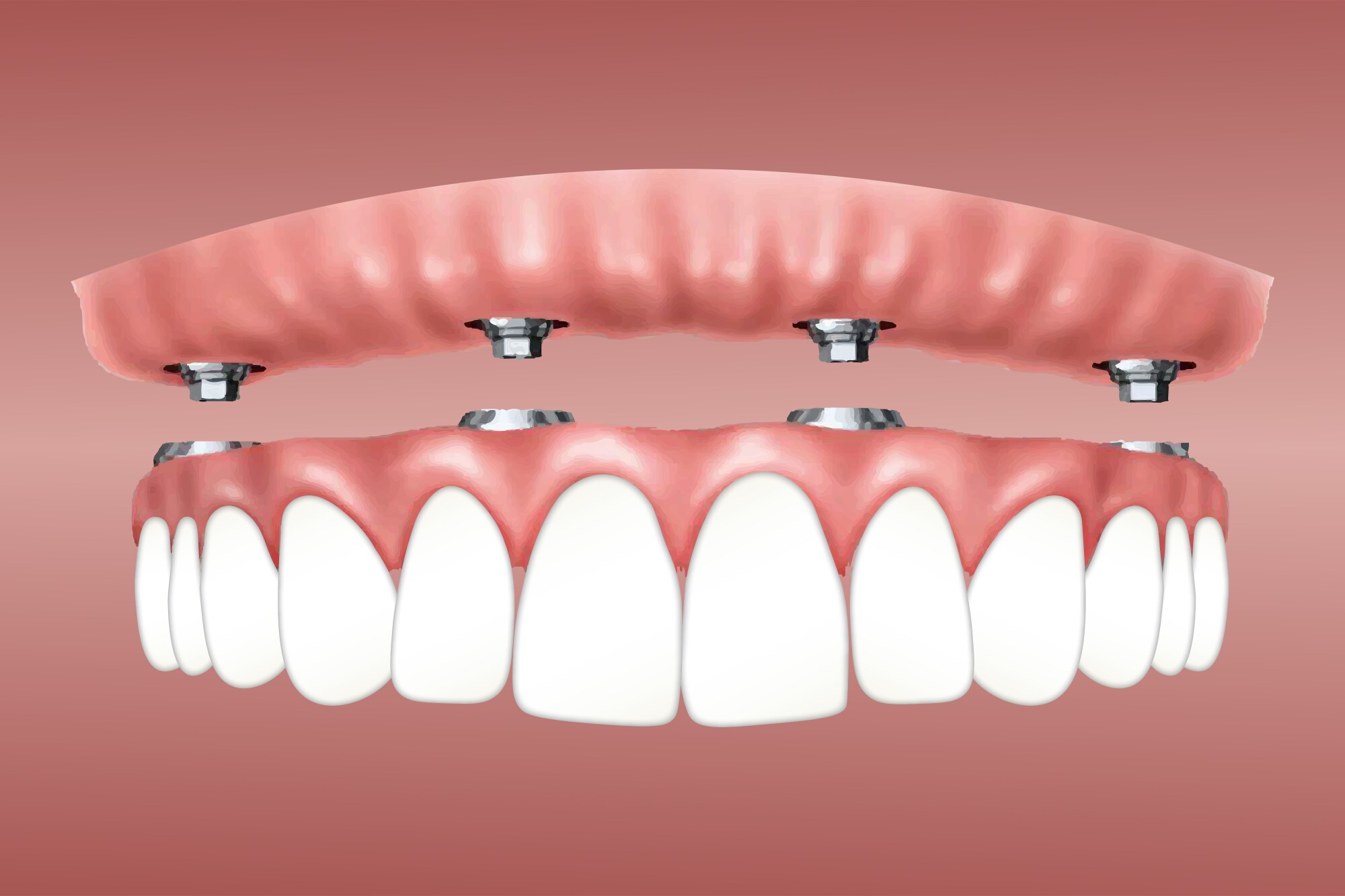6 Easy Facts About Dental Sense Shown
6 Easy Facts About Dental Sense Shown
Blog Article
The Single Strategy To Use For Dental Sense
Table of ContentsExcitement About Dental SenseThings about Dental SenseFacts About Dental Sense UncoveredSee This Report about Dental Sense
are clinical tools operatively implanted into the jaw to recover a person's capacity to eat or their look. They provide assistance for synthetic (fake) teeth, such as crowns, bridges, or dentures. When a tooth is shed as a result of injury or illness, a person can experience difficulties such as quick bone loss, faulty speech, or modifications to eating patterns that lead to pain.Dental dental implant systems contain an oral implant body and oral implant joint and might also include a joint addiction screw. Root canal procedure. The oral implant body is surgically inserted in the jawbone in area of the tooth's origin. The dental implant joint is usually affixed to the implant body by the abutment fixation screw and prolongs with gums into the mouth to support the connected synthetic teeth
(https://pubhtml5.com/homepage/vtrmy/)Structure of The Oral Implant System picking oral implants, talk to your dental service provider about the potential benefits and threats, and whether you are a candidate for the procedure. Things to consider: Your total health and wellness is an important consider establishing whether you are an excellent prospect for oral implants, for how long it will take to heal, and for how long the implant may remain in place.
Smoking cigarettes might influence the healing process and decrease the long-term success of the implant. The healing procedure for the dental implant body may take a number of months or longer, during which time you generally have a short-term abutment instead of the tooth. the oral implant treatment: Meticulously comply with the oral health guidelines provided to you by your dental company.
The smart Trick of Dental Sense That Nobody is Talking About
Implant failure can cause the demand for one more surgery to deal with or replace the implant system. Recovers the capability to chew Recovers cosmetic appearance Helps maintain the jawbone from shrinking because of bone loss Protects the health of the bordering bone and gum tissues Aids keep adjacent (neighboring) teeth steady Enhances lifestyle Damages to bordering natural teeth during implant positioning Injury to the surrounding cells throughout surgical treatment, such as sinus opening Injury during surgical procedure (for example, fracture of bordering jawbone) Poor feature, such as seeming like the teeth do not bite with each other typically An experience that the tooth hangs or turning in area resulting from an abutment screw loosening Implant body failure (looseness of the implant body) as a result of systemic infection, which might be more probable in people with unchecked diabetics issues because of local infection in bone and gum tissues supporting the dental implant body because of postponed healing, which might be most likely in people who smoke Difficulty cleansing the gum tissues around the implant, leading to poor dental hygiene Unattended gum disease Post-surgical pins and needles because of nerve impingement or damages Always alert wellness care providers and imaging service technicians that you have oral implants prior to any type of magnetic vibration imaging (MRI) or x-ray treatments.
FDA is not knowledgeable about any type of unfavorable events reported for MRI or x-ray procedures with oral implants. Oral implants systems are normally constructed from materials that follow worldwide agreement requirements of the International Company for Standardization (ISO) or ASTM International. These criteria have information of what makes a safe product.

A dental implant is a framework that changes a missing tooth. With screw-like devices, the cosmetic surgeon inserts a dental implant right into the jawbone, and it functions as a support for a man-made tooth, called a crown. A device called a joint links the artificial tooth to the dental implant. The crown is personalized to fit the person's mouth and match the color of their teeth.
Facts About Dental Sense Revealed
Some people are not eligible for oral implant surgical treatment. It is for oral specialists to run on individuals with: acute illnessuncontrollable metabolic diseasebone or soft tissue condition or infectionIf these problems are solved, an individual can have the surgical procedure. In, oral cosmetic surgeons avoid running on imp source people with: If individuals with any of the above undergo oral implant surgery, there is a greater danger of the implant failing.

Dental implant surgical treatment is an individualized process. It's not the very same for every person. The following provides a basic introduction of what you can anticipate your dental practitioner, oral specialist, periodontist or prosthodontist to do: Place the dental implant operatively. Offer you time to recover. Connect the message and last crown, bridge or denture.
Next off, your doctor will very carefully put the oral implant right into your jaw. Ultimately, your doctor will reposition your gums and shut the cut with stitches. If your implant is near the front of your mouth, your dental professional will make a temporary tooth for you to put on up until you recover. In this way, you won't have a gap in your smile while you recuperate.
9 Easy Facts About Dental Sense Explained
Your service provider can tell you what to expect in your situation. During the healing stage, your jawbone needs to fuse to the dental implant. This procedure, called osseointegration, is important for security and lasting success. This procedure can take anywhere from three to 9 months. Sometimes, it might take longer.
Once your dental implant heals, your dental practitioner can connect the joint (little port blog post) and your final restoration (crown, bridge or denture). This typically takes regarding one hour to complete and may need a second small surgical procedure. You shouldn't really feel any discomfort during your oral implant treatment due to the fact that your provider will certainly make use of medication to numb your gums.
Report this page